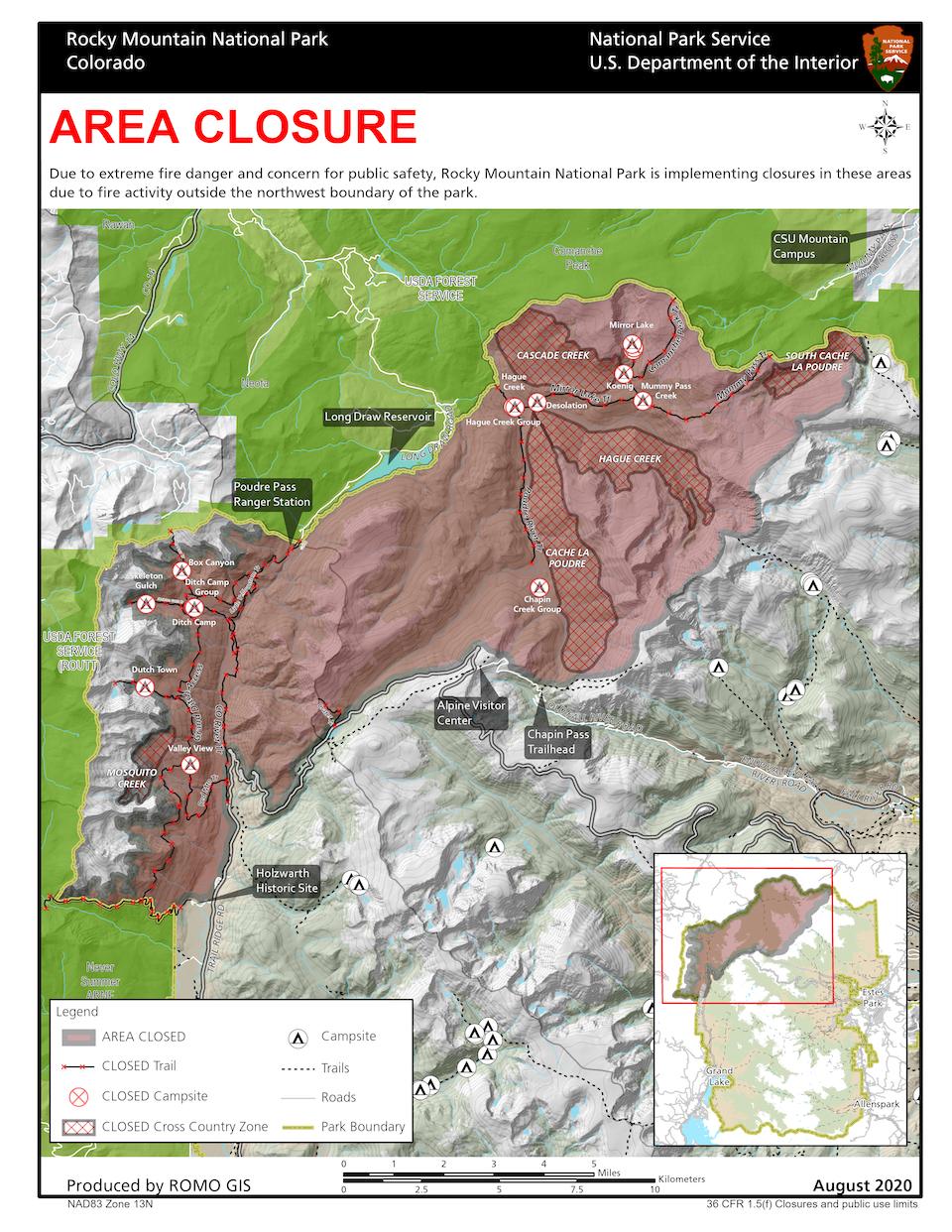
The Cameron Peak fire, seen here on Sunday from Rocky Mountain National Park, led to closures inside the park/USFS
In this skillet-hot and talc-dry summer of 2020 in the Intermountain West, worries over wildfires have spurred a strong measure of caution. That was evident Tuesday at Rocky Mountain National Park in Colorado, where officials closed a section of the park due to a fire beyond the park's boundaries.
The Cameron Peak Fire was about 4 miles beyond the park's northwest boundary. Park officials announced that due to forecast winds and extreme fire conditions the more remote northwest area of Rocky Mountain would be temporarily closed to visitors. The closure included wilderness campsites, cross-country zones, and trail systems. There are currently no road closures within the park.
Included in the closure was the Mummy Pass Trail, Commanche Peak Trail, Mirror Lake Trail, Poudre River Trail, Crater Trail, Colorado River Trail, Red Mountain Trail, Grand Ditch Access, Skeleton Gulch Trail, Thunder Pass Trail, Little Yellowstone Trail and Holzwarth Historic Site access beyond the historic site. Closed cross-country travel zones include Cascade Creek, Cache La Poudre, South Cache La Poudre, Hague Creek and Mosquito Creek.
Twenty wilderness campsites were also included in the closure area.

A swath of Rocky Mountain National Park along its northwest boundary was closed to the public Tuesday/NPS
The fire started August 13 on the Arapaho and Roosevelt national forests near Cameron Pass and Chambers Lake. It was burning in heavy timber stands over rugged terrain. The blaze was said to cover more than 14,000 acres Monday night.
If the Cameron Peak Fire moves into Rocky Mountain National Park, fire managers’ objective will continue to be full suppression of the fire, park staff said.
When recreating in Rocky Mountain National Park, visitors should always practice situational awareness, especially during periods of extreme fire danger. Always let someone know where you are going and when you are expected back. It is critical to plan ahead; before you hike, know the weather and wind forecast.
Watch for columns of smoke and hazy skies. Wildfire can move rapidly under the right conditions, faster than a person can run. Avoid canyons and draws and areas where there is a lot of dense and dry vegetation, such as high beetle kill and dead and down trees. Fire typically moves faster uphill than it does downhill. Avoid being at the top of a ridge with a wildfire below. Carry essential items, like a topographic map, and have wayfinding skills in case you need to evacuate an area.
If you see smoke or fire, call 911 to report it. Avoid traveling near it. Do not try to put out a wildfire by yourself.
A complete fire ban has been in effect in Rocky Mountain National Park since August 14. Campfires, including charcoal briquette fires, are not permitted within the park. However, petroleum-fueled stoves and grills are still permitted in developed campgrounds, picnic areas, and in designated backcountry campsites.
Stoves must be able to be turned on and off. Smoking is also prohibited, except within an enclosed vehicle, or when you're stopped within a developed paved area devoid of vegetation for at least three feet. Visitors are reminded to properly extinguish all lighted smoking materials and dispose of properly. Fireworks are always prohibited within the park.
Rocky Mountain National Park always has Stage 1 fire restrictions in place, where campfires are prohibited in the park, except within designated campfire rings in picnic areas and front-country campgrounds. The last time a total fire ban (Stage 2 fire restrictions) was in place in the park was in July 2018.



Add comment